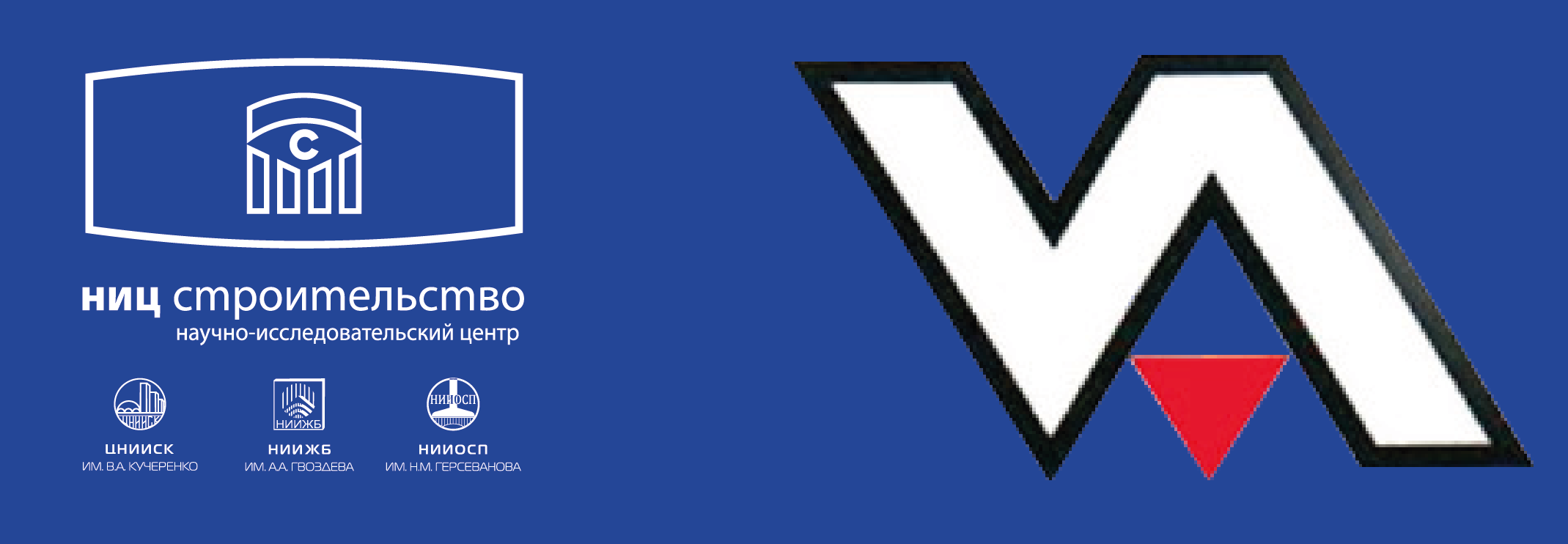Optimal structures of raw materials mixtures when manufacturing construction cement composites
Abstract
The main regularities of the formation of the optimum grain structure of construction composite materials on a cement basis with mineral fillers are considered and generalized. A complex method of 3D computer reconstruction of the grain structure and calculation of optimal compositions of raw materials mixtures is proposed, which makes it possible to vary a wide range of parameters and evaluate the derived properties of dispersed systems, as well as select optimal granulometric compositions of mixtures. Experimental data of studies on achieving the optimal structure of a building composite material are presented.
About the Authors
V. V. BelovRussian Federation
Doctor of Sciences (Engineering), Head of the Chair “Production of Building Products and Structures”
e-mail: vladim-bel@yandex.ru
I. V. Obraztsov
Russian Federation
Candidate of Sciences (Engineering), Engineer of EScience&Learning Center
e-mail: sunspire@list.ru
References
1. Barantseva E.A., Mizonov V.E., Khokhlova Yu.V. Protsessy smeshivaniya sypuchikh materialov: modelirovanie, optimizatsiya, raschet [Mixing processes of bulk materials: modeling, optimization, calculation]. Ivanovo: Ivanovo State Power Engineering University named after V. I. Lenin, 2008. 116 p.
2. Bazhenov Yu.M., Demyanova V.S., Kalashnikov V.I. Modifitsirovannye vysokokachestvennye betony [Modified high-quality concretes]. Moscow: ASV, 2006. 368 p.
3. Belov V.V., Smirnov M.A. Formation of the optimal macrostructure of the building mixture. <i>Stroitel’nye Materialy</i> [Construction Materials]. 2009. No. 9, pp. 88–90. (In Russian).
4. Belov V.V., Smirnov M.A. Theoretical foundations of the methodology for optimizing the granulometric composition of compositions for the manufacture of non-firing construction conglomerates. <i>RAASN. Vestnik otdeleniya stroitel’nykh nauk</i>. Moscow-Orel-Kursk. 2011, pp. 175–179). (In Russian).
5. Belov V.V., Smirnov M.A. New principles for determining the composition of high-quality concrete. <i>Vestnik Tverskogo gosudarstvennogo tekhnicheskogo universiteta.</i> Vol. 13. 2008, pp. 341–346. (In Russian).
6. Korolev L.V., Lupanov A.P., Pridatko Yu.M. Analysis of the packaging of polydisperse particles in composite building materials. <i>Sovremennye problemy nauki i obrazovaniya</i>. 2007. No. 6, pp. 105–108. (In Russian).
7. Korolev L.V., Lupanov A.P., Pridatko Yu.M. Dense packing of polydisperse particles in composite building materials. <i>Sovremennye problemy nauki i obrazovaniya.</i> 2007. No. 6. (In Russian).
8. Sloan N.J.A. Packing of balls. <i>V mire nauki. Scientific American</i>. 1984. No. 3, pp. 72–82. (In Russian).
9. Laurent P. Granger, P. , Fellow, ASCE. Effect of composition on basic creep of concrete and cement paste. <i>Journal Of Engineering Mechanics.</i> 1995. Vol. 121. Iss. 11, pp. 1261–1270.
10. Berdov G.I., Zyryanov V.N. Ways to improve the technology and properties of building.<i> Izvestiya vuzov. Stroitel’stvo</i>. 2010. No. 4, pp. 51–61. (In Russian).
11. Belov V.V., Smirnov M.A. Optimization of the granulometric composition of raw mixes for obtaining pressed concretes on a cement bundle. <i>Nanotekhnologii v stroitel’stve</i>. 2010. No. 2, pp. 7–17. (In Russian).
12. Obraztsov I.V., Belov V.V. Software-computational method for selecting the grain composition of the filler. <i>II Interd. The seminar is a competition for young scientists and postgraduates working in the field of binders, detergents and dry mixtures. Collection of reports</i>. Saint Petersburg: ALITinform. 2011, pp. 88–91. (In Russian).
13. Statyukha G.A., Telitsyna N.E., Surup I.V. Optimization of the granulometric composition of fillers for dry building mixes. <i>Shіdnoєvropejs’kij zhurnal</i> peredovih tehnologіj. 2007. No. 5/3 (29), pp. 23–26. (In Russian).
14. Vorobyev V.A., Ilyukhin A.V., Bokarev E.I. Cluster structures and percolation theory in computer materials science of building composite materials. <i>RAASN. Vestnik otdeleniya stroitel’nykh nauk</i>. 2011. Iss. 15, pp. 185–189. (In Russian).
15. Kharkhardin A.N., Khodykin E.I. Fractal dimension of dispersed and porous materials. <i>Stroitel’nye Materialy</i> [Construction Materials]. 2007. No. 8, pp. 62–63. (In Russian).
16. Golovinsky P.A. Physical relaxation and structure formation of concrete. <i>Materials of the International Congress. Science and Innovation in Construction SIB-2008. Vol. 1. Modern problems of construction materials science and technology.</i> Book 1 (A-N). Voronezh. 2008, pp. 100–112. (In Russian).
17. Rakhimov R.Z., Rakhimov N.R. Topological models of the structure and structural elements of building composite materials.<i> Tsement i ego primenenie.</i> 2011. No. 6, pp. 62–65. (In Russian).
18. Gusev B.V. Investigation of nanostructuring processes in fine-grained concretes. <i>Nanotekhnologii v stroitel’stve.</i> 2009. No. 3, pp. 8–14. (In Russian).
19. Sivkov S.P. Modern trends in cement production in the Russian Federation. <i>Rossiiskii ezhegodnik SSS.</i> 2011. pp. 76–80. (In Russian).
20. Kharkhardin A.N., Topchiev A.I. Equations for the coordination number in disordered systems. <i>Uspekhi sovremennogo estestvoznaniya.</i> 2003. No. 9, pp. 47–53. (In Russian).
21. Bazhenov Yu.M., Demyanova V.S., Kalashnikov V.I. Modifitsirovannye vysokokachestvennye betony [Modified high-quality concretes]. Moscow: DIA, 2006. 368 p.
22. Vlasov V.K. Regularities of optimization of the composition of concrete with dispersed mineral additives. <i>Beton i zhelezobeton</i>. 1993. No. 4, pp. 10–12. (In Russian).
23. Kalala J.T., Moys М.Н. Discrete element method modelling of liner wear in dry ball milling. <i>The Journal of The South African Institute of Mining and Metallurgy.</i> 2004. NOVEMBER, pp. 597–602.
Review
For citations:
Belov V.V., Obraztsov I.V. Optimal structures of raw materials mixtures when manufacturing construction cement composites. Concrete and Reinforced Concrete. 2021;606(4):29-38. (In Russ.)












